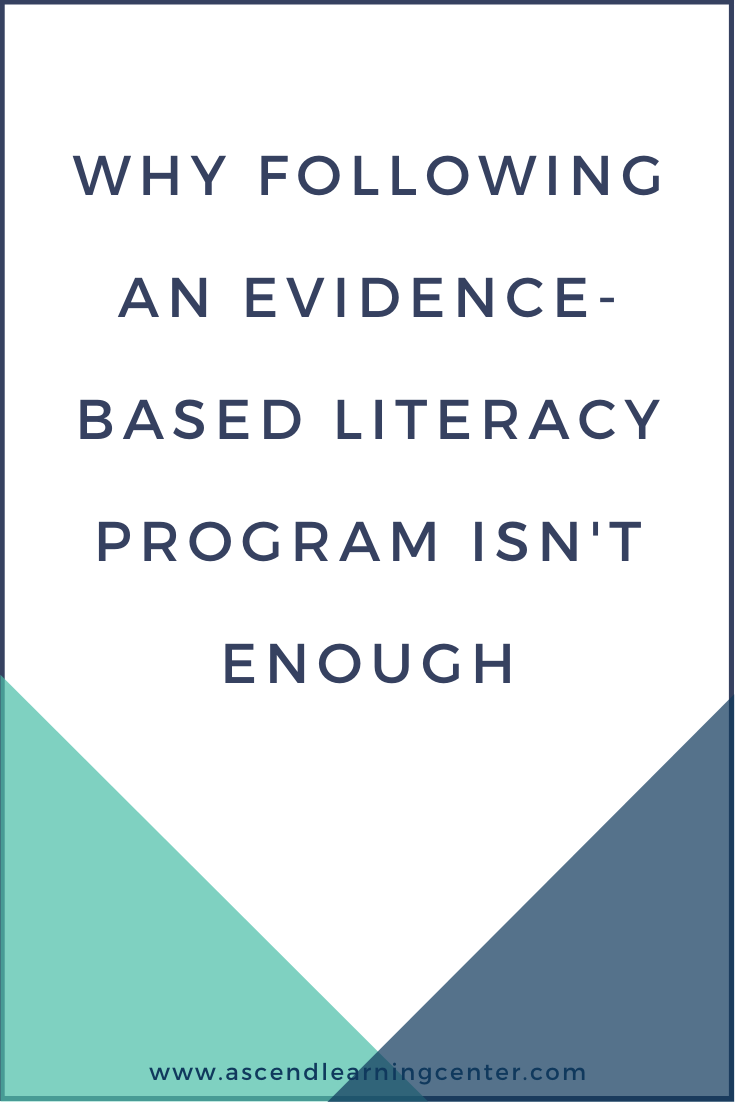Why Following an Evidence-Based Literacy Program Isn't Enough
If you know us well by now, you know that we are huge proponents of evidence-based (research-based) literacy intervention. It is CRITICAL that we be following evidence-based practices especially to get our struggling readers to grade level.
But here’s the issue - and it’s a big issue because nobody is really talking about it.
Just following an evidence-based program isn’t enough.
Before we jump into that, however, it is important to know what an evidence-based program looks like. Knowing that your literacy approach and what you are doing is supported by research is critical, as we said. This is Step 1 ALWAYS. To make sure you’re following evidence-based practices you need to make sure your approach is:
Systematic, Structured, & Cumulative
This means that your program should definitely have a scope and sequence that builds from the most basic concepts to more complex concepts. It needs to hit on phonology (sound structure of the language) and orthography (print structure of the language) in a structured approach. Ideally, you should also be explaining syllable types, morphological structure, syntax, and providing comprehension support along the way.
Explicit
Evidence-based literacy instruction must be EXPLICIT - you have to teach each of the patterns you want students to understand and do it in a way that is concrete and can be written down and organized. This is especially the case in phonological awareness and phonics-based instruction based on a review of the research by David Kilpatrick and outlined in his book Essentials of Assessing, Preventing, and Overcoming Reading Difficulties.
Individualized & Targeted
One of the biggest components of evidence-based practice is also making sure that support is provided based on data analysis of each student and targeted to each student’s individual areas of need.
Have you checked these three boxes?
If not - start here. You need to make sure these three things are being implemented first and foremost to create meaningful growth for your students.
If yes - AMAZING, this is incredible….and….it’s not enough for some of your students. Now we’ve been analyzing data for years - and we can tell you that if you follow an evidence-based approach following the three principles outlined above, your students will make growth in their reading and spelling skills, specifically in their ability to decode (sound out words) or encode (spell words in isolation). However, what we’ve seen happening is that while students will show this growth, not all students will consistently generalize that growth to their classwork long-term.
Many of these students, have all the tools in the toolbox, so to speak, but are still choosing to use a less effective tool to get the job done.
So what do we do?
We DON’T STOP working with students once they’ve completed a structured and systematic approach, we continue working with them to show them how to generalize their skills after they have all the tools. Or EVEN BETTER we layer this practice and application work into their structured-literacy lessons. One of the things we LOVE doing in our practice is taking a break after each progress monitoring session (about every 6-8 weeks for our students) and spending time practicing and applying the skills they’ve learned with REAL text, not controlled text.
We practice using graphic organizers and using comprehension strategies and see HOW they’re applying their targeted intervention skills to work that doesn’t look like our systematic and structured lesson. We want to see if they remember their vowel team patterns in reading and writing, and if they remember to divide up their syllables in other contexts because until they have the opportunity to practice doing that - they WILL NOT consistently apply the strategies they’ve been taught. And until they consistently apply the strategies they’ve been taught - they won’t get the full benefit of evidence-based instruction.
Structured and systematic, evidence-based literacy instruction will get us 90% of the way there for our struggling students. But if we don’t get them that last 10% many of them will revert to using ineffective strategies even though they have better more effective tools in their toolbelt.
Next week we will be sharing exactly how we do this - so stay tuned!!!
In the meantime, for more information about structured literacy intervention and what the research actually supports, grab our Science of Reading Blueprint. This blueprint will help you understand the 3 key scientific models that drive effective literacy instruction, learn how to integrate the research into practice, and provide simple checklists that will help you weave the science of reading into your instruction.

